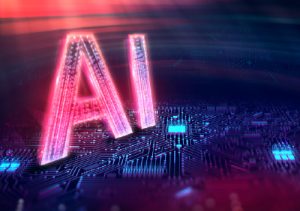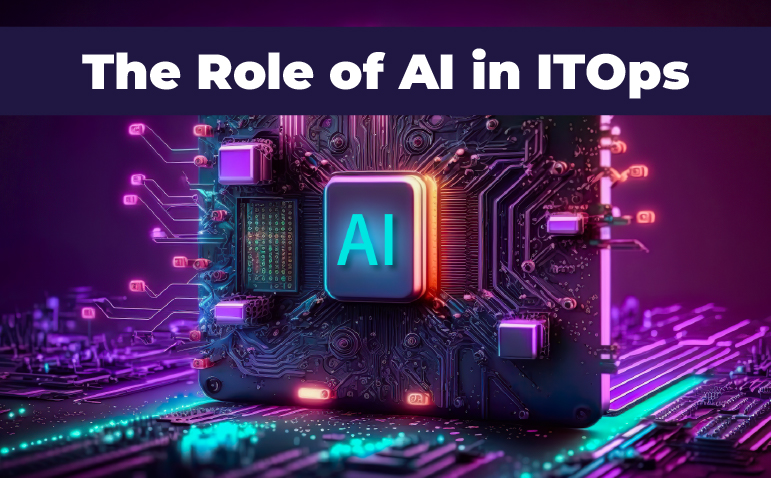The rise of AI and automation has marked a new chapter for IT operations (ITOps), revolutionizing how organizations manage their IT infrastructure. These technologies are driving more efficient, reliable, and scalable operations. This blog explores the crucial role AI and automation play in ITOps, highlighting their benefits, challenges, and future implications.
What is ITOps?
ITOps, or IT Operations, involves the processes and services managed by an organization’s IT department. This includes overseeing and maintaining technology infrastructure, ensuring system availability, and supporting essential business processes.
AIOps Overview
In 2016, Gartner introduced the term “AIOps” as “Algorithmic IT Operations,” which has since evolved into “Artificial Intelligence for IT Operations.” AIOps refers to the use of AI to enhance IT operations management, particularly as networks become larger and more complex. Traditional tools often struggle to handle the sheer volume, variety, and speed of modern data. AI plays a crucial role in overcoming these challenges by:
- Integrating data from various sources while ensuring data integrity for a more comprehensive analysis.
- Simplifying data analysis through advanced automated analytics, allowing for the prediction and prevention of issues and more efficient identification of root causes, thus improving decision-making.
The integration of AI in IT operations management brings key benefits, including better data management, proactive problem-solving, and more informed decision-making processes.
The Integration of AI in ITOps
Benefits of AI and Automation in ITOps
- Improved Accuracy
AI and automation enhance accuracy in IT operations by minimizing human intervention. Automated systems handle repetitive tasks consistently, reducing errors and improving data integrity. - Cost Savings
Automation cuts operational costs by streamlining processes and optimizing resource use. Organizations can achieve significant savings through lower labor costs and increased operational efficiency. - Enhanced Security
AI and automation strengthen security by continuously monitoring for vulnerabilities and implementing real-time threat detection. Automated security protocols ensure swift responses to potential threats.
Business Benefits of AIOps Implementation
Implementing AIOps offers substantial business advantages by automating IT operations. Leveraging AI for IT operations provides real-time data analysis, predictive insights, and quicker issue resolution. AI-driven network management boosts performance, reduces downtime, and improves overall IT efficiency. By automating routine tasks and identifying problems early, AIOps enables businesses to operate more efficiently, cut costs, and focus on strategic priorities.
Key Benefits of AI and Automation in IT Service Delivery
- Faster Decision-Making
AI accelerates IT service delivery by enabling real-time analysis of large datasets, leading to faster, more informed decisions. This boosts profitability and enhances business operations. - Digital Transformation and Modernization
AI supports industries in their digital transformation and IT modernization efforts, scaling operations and ensuring cybersecurity. According to Kiersten E. Todt of the Cybersecurity and Infrastructure Security Agency, it’s essential to integrate security into technology from the outset, ensuring that safety and security are built in from the beginning. - Improved Service Management
CIOs are leveraging AI to enhance service management processes through natural language processing (NLP) and machine learning (ML). These technologies provide real-time operational insights, enabling proactive responses and increased productivity.
Advanced AI Capabilities in ITOps
- Intelligent Ticket Categorization
Chatbots streamline ticket management by categorizing incidents automatically in an ITSM environment. For example, when a client raises a ticket, a virtual agent can instantly classify the issue and direct it to the appropriate team, improving efficiency. - Automating Routine Tasks
AI can automate repetitive tasks, such as converting resolution emails into templates, creating a repository of solutions. This improves resolution speed and reduces the need to craft new solutions from scratch. - Enhanced Cybersecurity
AI and automation have transformed cybersecurity, helping businesses combat increasing cyber threats. Machine learning enables proactive threat detection, while AI bots secure systems immediately upon detecting a compromised account. - Automating Complex Tasks
AI and machine learning observe and learn from human tasks, gradually automating more complex processes. This includes identifying patterns in responses and offering intelligent suggestions, improving endpoint and security management. - Enhanced Decision-Making
AI can streamline various IT functions, including service request management, change and asset management, and workflow routing. It predicts problems, reduces disruptions, and improves asset performance through smart management.
Challenges of AI and Automation in ITOps
- Integration Complexity
Integrating AI and automation into existing IT infrastructure can be challenging and resource-intensive. Organizations must carefully plan integration strategies to ensure smooth adoption. - Skill Gap
AI and automation require specialized skills, which may not be available internally. Organizations need to invest in training and development to bridge this skill gap. - Data Management
AI relies on high-quality data, so effective data management practices are crucial to ensure accurate and relevant data for AI systems.
Future Trends in AI and Automation in ITOps
- Autonomous IT Operations
The future of ITOps will involve fully autonomous systems that manage and optimize IT infrastructure with minimal human involvement, increasing efficiency and reducing costs. - Enhanced AI Capabilities
As AI technology advances, future systems will offer deeper insights, more accurate predictions, and improved decision-making capabilities. - Collaborative Automation
Increased collaboration between AI systems and human operators is on the horizon. AI will augment human capabilities, providing valuable support and insights to enhance decision-making.
Conclusion
The integration of AI and automation in ITOps is revolutionizing the way organizations manage their IT infrastructure. These technologies offer numerous benefits, including improved efficiency, cost savings, and enhanced security. However, they also present challenges that require careful planning and execution. As AI and automation continue to evolve, their role in ITOps will only become more critical, driving innovation and transforming IT operations.


